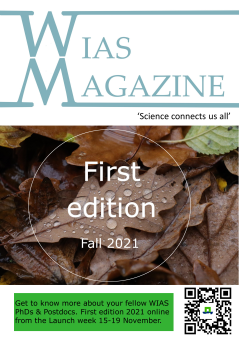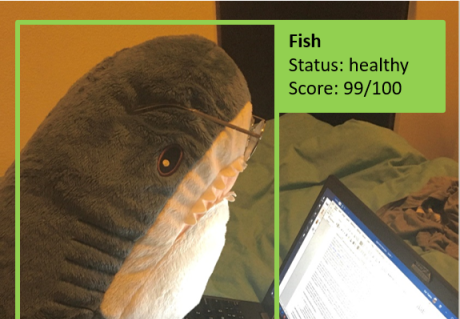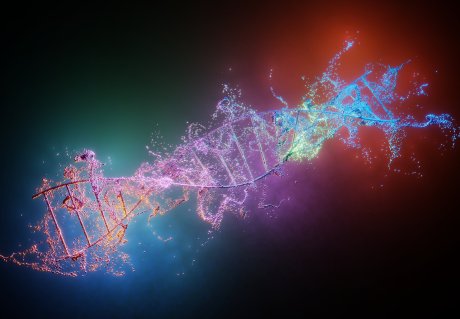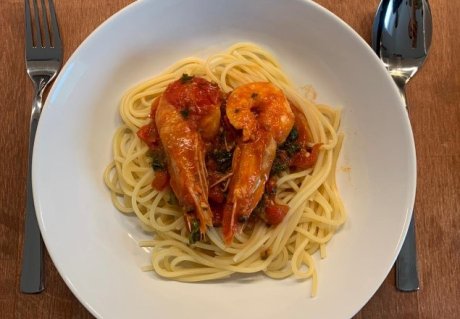
'The making of'
WIAS magazine - Fall edition 2021
Word from the board
What an achievement: the first edition of WIAS Magazine has been published! In this short interview we get a sense of the people behind the magazine and dive a bit into the history of it.
Kaylee van Dijk, you are the editor and have been instrumental in getting the magazine up and running. Could you tell us a bit more about where the idea of the WIAS magazine came from?
Maria Forlenza, my supervisor and also academic advisor of the magazine, suggested ‘to create a platform specially for WIAS PhDs & Post-Docs to show the heterogeneity of people we have and promote the work they do at ASG’’. Based on this, I started brainstorming with other WIAS PhDs about how to bring this magazine to life. I would like to thank everyone that participated in these brainstorming sessions about the content and aesthetics of the magazine. Once the magazine started to get more shape, so did the Magazine board that currently consists of three members. This all developed into WIAS Magazine that you can all read from today onwards, based on the idea that science connects us al.
What are the aims of the magazine?
As stated above, WIAS magazine is centred around the idea that science connects us all. Therefore, the main aim of the magazine is to provide a platform to all WIAS PhDs & Post-Docs to share and promote their work. Secondly, the magazine aims to show the people behind the research and have articles with a personal touch to stimulate connections within the WIAS community. Lastly, the magazine board provides a great opportunity to get a taste of what happens behind the scenes of scientific journals.
The board of the magazine currently consists of Kaylee van Dijk, Annemarieke de Bruin and Corrie Gunter. Can you all tell us a bit about yourselves and why you joined the board?
Kaylee: I am a PhD student at the Aquaculture and Fisheries group studying molecules and cells directing inflammation with zebrafish as my model. I very much enjoy sharing knowledge, as well as, writing and I was looking for ways to connect more with the WIAS community. Given those interests, starting the magazine with an almost blank page provided an opportunity I just could not refuse. It’s been great to see all visions for the magazine come together and be able to publish the first edition!
Annemarieke: I am a PhD student at the Animal Production Systems group looking at a just transition of the food system in the North of the Netherlands. I joined the board to support Kaylee with setting up the magazine. It’s great to help put together a magazine that amplifies the voices of PhD students and Post-Docs from across WIAS.
Corrie: I’m a PhD student in the Aquaculture and Fisheries group where I aim to develop novel vaccines for fish to better understand their immune systems. I joined WIAS Magazine because I wanted to contribute and participate in communicating the fascinating science of the WIAS to a wider audience.
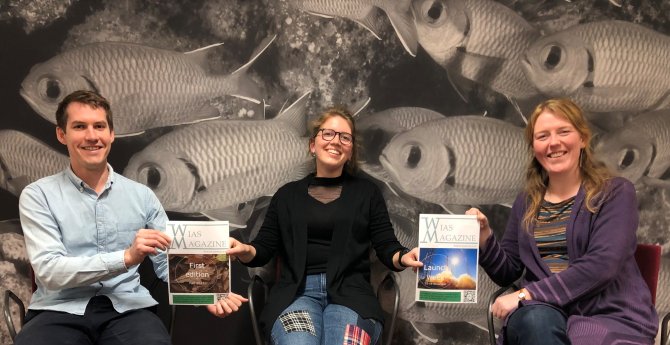
WIAS magazine board: Corrie, Kaylee, Annemarieke
What are your ambitions for the magazine?
Kaylee: The current magazine is published online and open access to ensure the widest possible dissemination. I would like for the magazine to reach as all WIAS PhDs & Post-docs positioned around the globe and keep us connected through our science. I also hope that later on we will be able to complement the online magazine with a printed version that can stay in offices and homes for years after their publication date.
Annemarieke: I hope that by this time next year we have managed to include articles from all the different groups that are part of WIAS. My ambition is that it should be a magazine that represents the diverse research strands and interests of WIAS PhDs and Post-Docs.
Corrie: I believe the research that each of us are doing at WIAS is important and platforms like this magazine contribute toward sharing this research with everyone. My ambitions for the magazine is to help grow and sustain this platform as the place to visit for a slightly deeper look into the research of WIAS, that is what this magazine is about.
Anything else you want to add?
Kaylee: We are looking for new members to join the board as designer or co-editor, so please do get in touch if you are interested in science communication! And the deadline to submit for the winter edition is on the 3rd of December, so get writing!
Annemarieke: and if you eat fish – do try out the shrimp recipe. It looks great!
We hope you enjoy the articles included in this first Fall edition!
